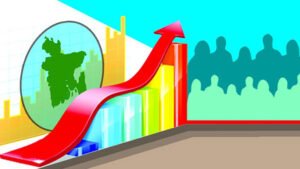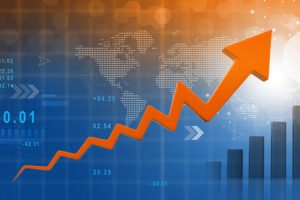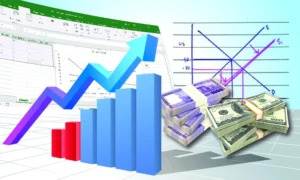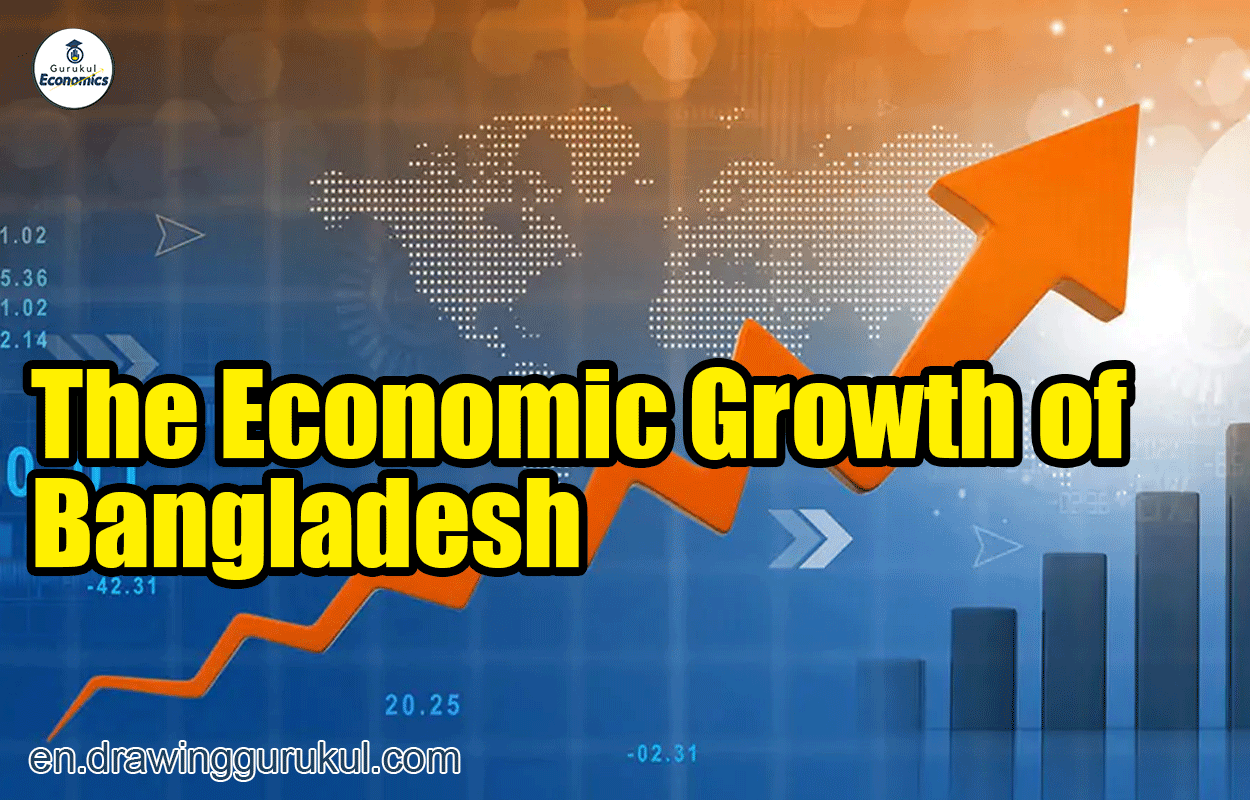The Economic Growth of Bangladesh. Bangladesh, a South Asian country known for its rich cultural heritage and historical significance, has undergone remarkable economic transformation in recent decades. From being one of the poorest nations in the world, it has evolved into one of the fastest-growing economies in Asia. This article delves into the factors driving Bangladesh’s economic growth, the achievements so far, and the challenges that lie ahead.
The Economic Growth of Bangladesh
Historical Context
The journey of Bangladesh’s economic growth began in the early 1970s after gaining independence from Pakistan. The country faced numerous challenges including political instability, infrastructural deficits, and poverty. However, despite these hurdles, Bangladesh has made significant strides in improving its economic indicators.

Key Drivers of Economic Growth
1. Textile and Garment Industry: One of the primary drivers of Bangladesh’s economic growth is its booming textile and garment industry. The sector, often referred to as the Ready-Made Garments (RMG) industry, has positioned Bangladesh as one of the world’s largest apparel exporters. This industry alone contributes to a substantial portion of the country’s GDP and employment.
2. Remittances: Another crucial component is remittances from Bangladeshi workers abroad. With millions of expatriates working in various countries, the inflow of remittances has provided a significant boost to the national economy. These funds contribute to domestic consumption and investment.
3. Infrastructure Development: Investment in infrastructure, including roads, bridges, and ports, has played a pivotal role in facilitating economic activities. Projects like the Padma Bridge and Dhaka Metro Rail are expected to further enhance connectivity and support economic growth.
4. Foreign Direct Investment (FDI): Bangladesh has increasingly attracted foreign direct investment due to its favorable business environment, competitive labor costs, and government incentives. The growth of industrial zones and special economic zones has been instrumental in this regard.
5. Digital Economy and Technology: The rise of the digital economy, fueled by advancements in technology and internet connectivity, has also contributed to economic growth. The growth of the IT and software sector, as well as mobile financial services like bKash, has bolstered economic activities and financial inclusion.

Achievements and Milestones
1. GDP Growth: Over the past decade, Bangladesh has consistently recorded impressive GDP growth rates, often exceeding 6% annually. This growth has been driven by both domestic consumption and export-oriented industries.
2. Poverty Reduction: Significant progress has been made in reducing poverty levels. According to the World Bank, Bangladesh has successfully halved its poverty rate over the past few decades, demonstrating the impact of its economic policies and development programs.
3. Human Development: Improvements in healthcare, education, and social welfare have contributed to higher human development indices. Initiatives such as increased literacy rates, improved maternal and child health, and expanded access to education have positively impacted the quality of life.
4. Economic Resilience: Bangladesh has shown resilience in the face of global economic challenges, including the COVID-19 pandemic. The country’s economic policies and recovery strategies have helped mitigate the impact and sustain growth.
Challenges and Areas for Improvement
1. Income Inequality: Despite overall economic growth, income inequality remains a significant issue. The benefits of growth are not equally distributed, and addressing disparities between different segments of the population is crucial for inclusive development.
2. Infrastructure Bottlenecks: While progress has been made, there are still infrastructure challenges that need to be addressed. Issues such as traffic congestion, inadequate power supply, and insufficient waste management require ongoing attention and investment.
3. Political Stability: Political stability is essential for sustained economic growth. Periodic political unrest and governance issues can impact investor confidence and disrupt economic activities.
4. Environmental Sustainability: Economic growth must be balanced with environmental sustainability. Bangladesh faces environmental challenges such as flooding, riverbank erosion, and climate change impacts. Ensuring sustainable development practices is vital for long-term prosperity.
5. Skill Development: As the economy evolves, there is a need for a skilled workforce to meet the demands of new industries and technologies. Investments in education and vocational training are necessary to equip the workforce with relevant skills.

Future Prospects
Looking ahead, Bangladesh’s economic prospects appear promising. Continued investment in infrastructure, technological advancements, and reforms in governance and regulatory frameworks will be key to sustaining growth. The country’s vision of becoming a middle-income nation by 2021 and achieving developed country status by 2041 reflects its ambitious goals and commitment to progress.
Strategic initiatives, such as the “Vision 2021” and “Perspective Plan 2041,” aim to propel the economy further by focusing on industrialization, innovation, and sustainable development. By addressing existing challenges and leveraging its strengths, Bangladesh is poised to continue its trajectory of rapid economic growth and development.
Bangladesh’s economic journey from poverty to rapid growth is a testament to its resilience and strategic efforts. With ongoing reforms, investments, and a focus on inclusive development, the country is well-positioned to achieve its future economic goals. The continued progress of the textile industry, the impact of remittances, and advancements in technology will play critical roles in shaping Bangladesh’s economic landscape in the years to come.
See more:
